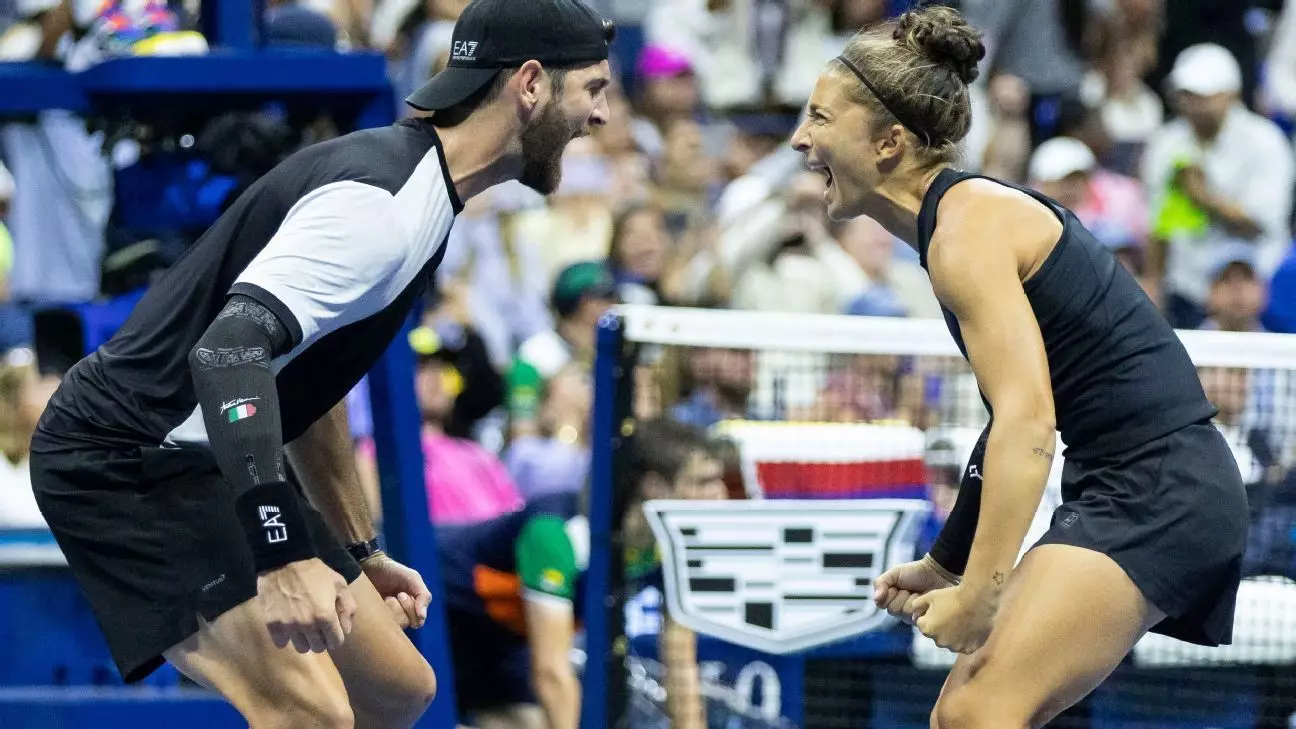The recent redesign of the U.S. Open’s mixed doubles tournament marked a seismic shift in tennis traditions, stirring debate among purists while igniting passion among fans eager for groundbreaking experiences. Traditionally, doubles has been a sidelined complement to the main singles event, often overshadowed and undervalued. However, the tournament’s makeover aimed to thrust doubles into the spotlight, emphasizing entertainment and broader appeal over conventional formats. This radical change, while controversial, underscores a broader question: can innovation breathe new life into aging sporting events?
For many doubters, the revamped format—featuring shorter sets and a condensed schedule—risked undermining the sport’s integrity. Critics argued that these modifications devalue the skill and strategic nuance that define tennis doubles. Yet, what unfolded in 2023 suggested that elevating doubles to a more prominent stage can indeed generate genuine excitement, even if it initially seems to threaten the sport’s traditional fabric.
Furthermore, the decision to hold the event before the singles tournament sparked mixed reactions. While the move was designed to attract elite singles players and boost overall tournament attendance, it also alienated some doubles specialists who felt sidelined. Nevertheless, the results proved that bold experimentation can yield unexpected benefits: highly charged matches, packed crowds, and a revitalized appreciation for the nuances of doubles play.
Underdogs Rise to the Occasion—A Narrative of Triumph and Identity
Among those who defied skepticism were Sara Errani and Andrea Vavassori. Facing a tournament that many believed to be a stunt, their journey became a testament to resilience and the enduring spirit of doubles. Despite doubts about their qualification—Errani wasn’t even sure they would compete—these players seized their opportunity. Their victory was more than just a trophy; it was a statement that doubles still holds relevance, depth, and excitement.
Errani and Vavassori’s triumph resonates on multiple levels. Not only did they dethrone high-profile opponents like Iga Swiatek and Casper Ruud, but they also did so by embodying the players’ collective fight to prove that doubles deserves space and recognition in the sport’s grandest arena. Their emotional celebration—smiles, hugs, and a palpable sense of victory—was a defiant gesture against critics who dismissed the event as superficial. This narrative challenges the notion that only singles stars can draw crowds or generate passion; sometimes, it’s the underdogs with everything to prove who ignite the most fire.
Their win also sparks reflection on tennis’s evolving identity. Are the conventional elite—the top-ranked singles players—the only legitimate focus? Errani and Vavassori’s success suggests that the game’s rich tapestry hinges on diversity. Specialization is valuable, but so is the unpredictability that comes when doubles teams from varied backgrounds band together to challenge the status quo. This victory hints at a future where doubles players aren’t just sidelines but central figures capable of inspiring passionate audiences.
Spectacle, Strategy, and the Future of Tennis Entertainment
The crowd’s rapt attention during the matches—despite rain delays and the unconventional schedule—underscores a vital truth: modern tennis viewers hunger for accessible, high-energy entertainment. The tournament’s new format, featuring rapid-fire sets and a match tiebreak in the decisive moments, prioritized spectacle without sacrificing competitive essence. This approach mimics the principles of sports entertainment—fast-paced, emotionally charged, and accessible.
Critics argue that such changes risk diluting the sport’s tradition. However, as professional athletes like Casper Ruud acknowledged, these modifications brought unprecedented attention and engagement. The packed stadium and raucous applause demonstrated that when tennis adapts to contemporary tastes, it can attract new audiences and rekindle passion among existing fans. The challenge lies in balancing tradition with innovation—striking a chord that honors tennis’s history while embracing its future.
Additionally, the participation of megastars such as Carlos Alcaraz, Emma Raducanu, and Naomi Osaka reveals an industry willing to experiment for broader appeal. Although many of these icons exited early, their presence drew attention, and their early exits no doubt fueled conversations about the longevity and viability of the new format. The real takeaway? When a sport seeks to evolve, risks are inevitable, but so are opportunities for growth.
A Paradigm Shift for Doubles and Tennis as a Whole
The success of Errani and Vavassori’s unlikely victory represents more than a moment of personal achievement; it signifies a paradigm shift in how doubles could be perceived and promoted. Their win demonstrated that underdog stories can thrive even in an environment heavily focused on star power and spectacle. It’s a reminder that the essence of sports lies in unpredictability and surprise, qualities often overshadowed in traditional formats.
This victory also raises questions about the future of doubles in tennis. Will these new formats foster greater interest and investment, or will they fade if they don’t meet expectations? Judging by the enthusiastic crowd reactions and the players’ own candid comments, the signs point toward a more inclusive, lively, and engaging tennis landscape. The challenge now is maintaining this momentum beyond a single tournament, ensuring that doubles garner the respect and attention they deserve year-round.
In the end, Errani and Vavassori’s triumph embodies the core of sports—resilience, passion, and the relentless pursuit of excellence. Their victory is a powerful reminder that sometimes, shaking up the status quo is necessary to discover new avenues of excitement and community in an age hungry for connection, spectacle, and stories of perseverance.


Leave a Reply